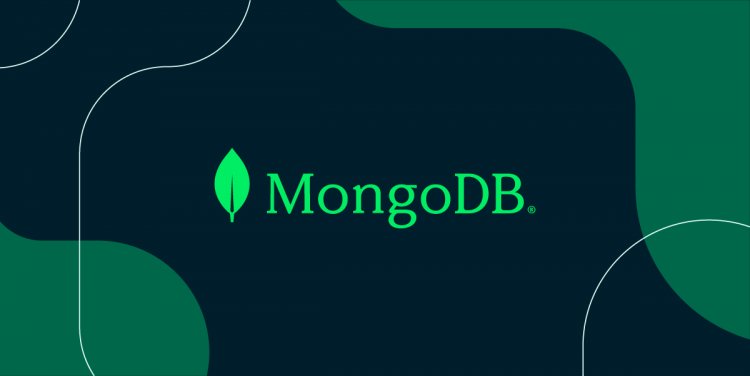MongoDB - Relationships

MongoDB - Relationships
In the realm of NoSQL databases, MongoDB stands tall as one of the most versatile choices. While it's renowned for its flexibility, MongoDB's prowess in handling relationships between data is a topic that often raises questions. In this article, we will unravel the intricacies of relationships in MongoDB, exploring how different documents are logically related to each other, and how to model these relationships effectively. Whether you're a MongoDB novice or a seasoned user, understanding these concepts is crucial for harnessing the full potential of this database.
Table of Contents
- Understanding MongoDB Relationships
- Types of Relationships
- Inline Approach
- Referential Approach
- One-to-One Relationship
- One-to-Many Relationship
- Many-to-One Relationship
- Many-to-Many Relationship
- Practical Example: Storing User Addresses
- Document Structure: A Custom Document
- Conclusion
- FAQs
1. Understanding MongoDB Relationships
At its core, MongoDB is a document-oriented NoSQL database. Instead of traditional tables, it uses collections to store documents, which can have complex and nested structures. Relationships in MongoDB represent how these documents are logically connected to each other, allowing you to retrieve related data efficiently.
2. Types of Relationships
MongoDB supports various types of relationships, including:
- Inline Approach: Embedding documents within other documents.
- Referential Approach: Using references to connect documents.
3. Inline Approach
In the inline approach, you embed one document within another. This is suitable for one-to-one or one-to-few relationships. It simplifies data retrieval but can lead to data duplication if not used judiciously.
4. Referential Approach
The referential approach involves using references, such as document IDs, to establish connections between documents. This is ideal for one-to-many or many-to-many relationships and ensures data consistency but requires more complex queries.
5. One-to-One Relationship
In MongoDB, a one-to-one relationship represents a scenario where one document in one collection is associated with exactly one document in another collection. This type of relationship is relatively rare in MongoDB, as it's often more efficient to embed related data within a single document. However, there are situations where a one-to-one relationship makes sense, such as separating sensitive user data from the main user document.
Let's illustrate a one-to-one relationship in MongoDB with an example involving user profiles and user credentials:
User Profiles Collection
{
"_id": ObjectId("user_profile_id_1"),
"user_id": ObjectId("user_id_1"),
"full_name": "John Doe",
"date_of_birth": "1980-05-15",
"gender": "Male",
"address": "123 Main St, Anytown, USA"
}
User Credentials Collection
{
"_id": ObjectId("user_credentials_id_1"),
"user_id": ObjectId("user_id_1"),
"username": "johndoe123",
"password": "hashed_password_here",
"email": "john@example.com"
}
In this example:
- The "User Profiles" collection stores information about users, including their full name, date of birth, gender, and address. Each document in this collection has a unique identifier (
_id) and a reference to the corresponding user in the "User Credentials" collection via the "user_id" field. - The "User Credentials" collection stores sensitive data such as usernames, hashed passwords, and email addresses. Like the "User Profiles" collection, each document here has a unique identifier (
_id) and a reference to the user in the "User Profiles" collection using the "user_id" field.
This one-to-one relationship structure allows you to maintain a separation between user profile information and sensitive credentials while ensuring that each user's data can be easily associated. You can perform queries to retrieve user profiles and their corresponding credentials based on the shared "user_id."
Remember that while one-to-one relationships can be useful in specific scenarios, MongoDB's flexibility often encourages the use of embedded documents or different data modeling approaches to handle related data efficiently. The choice between one-to-one and other relationship types should be driven by the specific requirements of your application.
6. One-to-Many Relationship
In MongoDB, a one-to-many relationship represents a scenario where one document in a collection is associated with multiple documents in another collection. This type of relationship is quite common and is often used to model situations where one entity has multiple related items. Let's explore a one-to-many relationship with an example involving a user and their multiple addresses:
Users Collection
{
"_id": ObjectId("user_id_1"),
"username": "johndoe123",
"full_name": "John Doe",
"email": "john@example.com"
}
Addresses Collection
{
"_id": ObjectId("address_id_1"),
"user_id": ObjectId("user_id_1"),
"street": "123 Main St",
"city": "Anytown",
"country": "USA"
}
{
"_id": ObjectId("address_id_2"),
"user_id": ObjectId("user_id_1"),
"street": "456 Elm St",
"city": "Another Town",
"country": "USA"
}
{
"_id": ObjectId("address_id_3"),
"user_id": ObjectId("user_id_1"),
"street": "789 Oak St",
"city": "Yet Another Town",
"country": "USA"
}
In this example:
- The "Users" collection stores information about users, including their username, full name, and email address. Each user document has a unique identifier (
_id). - The "Addresses" collection stores user addresses. Each address document is associated with a specific user using the "user_id" field, which references the user's unique identifier.
Here, we have a one-to-many relationship, as one user (identified by "user_id_1") can have multiple addresses. The "user_id" field in the "Addresses" collection serves as a reference to the corresponding user in the "Users" collection.
This structure allows you to efficiently query and manage user addresses while maintaining a clear association with the user to whom each address belongs. You can easily retrieve all addresses for a specific user by matching the "user_id" field.
One-to-many relationships are fundamental in database design, and MongoDB provides flexibility in modeling them according to your application's needs. This flexibility is one of MongoDB's strengths, allowing you to adapt your data model as your application evolves.
7. Many-to-One Relationship
In MongoDB, a many-to-one relationship represents a scenario where multiple documents in one collection are related to a single document in another collection. This type of relationship is common in various data models and can be effectively managed using the referential approach. Let's explore a many-to-one relationship with an example involving multiple orders related to a single customer:
Customers Collection
{
"_id": ObjectId("customer_id_1"),
"name": "Alice Smith",
"email": "alice@example.com"
}
Orders Collection
{
"_id": ObjectId("order_id_1"),
"customer_id": ObjectId("customer_id_1"),
"order_date": "2023-08-15",
"total_amount": 150.0
}
{
"_id": ObjectId("order_id_2"),
"customer_id": ObjectId("customer_id_1"),
"order_date": "2023-08-20",
"total_amount": 200.0
}
{
"_id": ObjectId("order_id_3"),
"customer_id": ObjectId("customer_id_1"),
"order_date": "2023-08-25",
"total_amount": 100.0
}
In this example:
- The "Customers" collection stores information about customers, including their name and email address. Each customer document has a unique identifier (
_id). - The "Orders" collection stores order details, including the order date and total amount. Each order document is associated with a specific customer using the "customer_id" field, which references the customer's unique identifier.
Here, we have a many-to-one relationship, as multiple orders are associated with a single customer (identified by "customer_id_1"). The "customer_id" field in the "Orders" collection serves as a reference to the corresponding customer in the "Customers" collection.
This structure allows you to efficiently manage and query orders for each customer while maintaining a clear association with the customer to whom each order belongs. You can easily retrieve all orders for a specific customer by matching the "customer_id" field.
Many-to-one relationships are common in various business scenarios, and MongoDB's referential approach enables you to establish these relationships effectively, ensuring data consistency and organization in your database.
8. Many-to-Many Relationship
In MongoDB, a many-to-many relationship represents a scenario where multiple documents in one collection are linked to multiple documents in another collection. Managing many-to-many relationships often requires the use of a junction collection to handle these complex associations. Let's explore a many-to-many relationship with an example involving students and courses:
Students Collection
{
"_id": ObjectId("student_id_1"),
"name": "Alice Johnson",
"birthdate": "2000-03-15"
}
{
"_id": ObjectId("student_id_2"),
"name": "Bob Smith",
"birthdate": "1999-08-20"
}
{
"_id": ObjectId("student_id_3"),
"name": "Charlie Brown",
"birthdate": "2001-01-10"
}
Courses Collection
{
"_id": ObjectId("course_id_1"),
"title": "Mathematics 101",
"credits": 3
}
{
"_id": ObjectId("course_id_2"),
"title": "History of Art",
"credits": 2
}
{
"_id": ObjectId("course_id_3"),
"title": "Computer Science Fundamentals",
"credits": 4
}
Enrollments (Junction) Collection
{
"_id": ObjectId("enrollment_id_1"),
"student_id": ObjectId("student_id_1"),
"course_id": ObjectId("course_id_1")
}
{
"_id": ObjectId("enrollment_id_2"),
"student_id": ObjectId("student_id_1"),
"course_id": ObjectId("course_id_2")
}
{
"_id": ObjectId("enrollment_id_3"),
"student_id": ObjectId("student_id_2"),
"course_id": ObjectId("course_id_2")
}
{
"_id": ObjectId("enrollment_id_4"),
"student_id": ObjectId("student_id_2"),
"course_id": ObjectId("course_id_3")
}
{
"_id": ObjectId("enrollment_id_5"),
"student_id": ObjectId("student_id_3"),
"course_id": ObjectId("course_id_1")
}
{
"_id": ObjectId("enrollment_id_6"),
"student_id": ObjectId("student_id_3"),
"course_id": ObjectId("course_id_3")
}
In this example:
- The "Students" collection stores information about students, including their name and birthdate. Each student document has a unique identifier (
_id). - The "Courses" collection stores information about courses, including the course title and the number of credits. Each course document has a unique identifier (
_id). - The "Enrollments" (Junction) collection manages the many-to-many relationship between students and courses. Each enrollment document represents a student's enrollment in a particular course. It contains references to both the student and the course using the "student_id" and "course_id" fields, respectively.
Here, we have a many-to-many relationship, as multiple students are enrolled in multiple courses, and each course can have multiple students. The "Enrollments" collection acts as a junction collection, facilitating these complex relationships.
This structure allows you to efficiently manage and query the enrollments of each student and the courses they are enrolled in, while maintaining a clear association between students and courses.
Many-to-many relationships are prevalent in various domains, and MongoDB's ability to handle these relationships through junction collections provides a robust solution for complex data modeling scenarios.
9. Practical Example: Storing User Addresses
Consider the scenario of storing addresses for users. It's a classic one-to-many relationship where one user can have multiple addresses. In MongoDB, you can model this using the referential approach, with each user document containing references to their associated address documents.
10. Document Structure: A Custom Document
Here's an example of a custom document structure for a user with addresses:
{
"_id": ObjectId("user_id"),
"name": "John Doe",
"email": "john@example.com",
"addresses": [
{
"_id": ObjectId("address_id_1"),
"street": "123 Main St",
"city": "Anytown",
"country": "USA"
},
{
"_id": ObjectId("address_id_2"),
"street": "456 Elm St",
"city": "Another Town",
"country": "USA"
}
]
}
In this example, each user document contains an array of references to their associated address documents, allowing for easy retrieval and management.
11. Conclusion
Understanding and effectively managing relationships in MongoDB is crucial for designing efficient and scalable databases. Whether you opt for the inline or referential approach, the choice should align with your specific use case. MongoDB's flexibility allows you to adapt your data model as your application evolves, making it a powerful choice for a wide range of projects.
FAQs
-
Can MongoDB handle complex relationships like many-to-many?
- Yes, MongoDB can handle many-to-many relationships by using junction collections and references.
-
What's the difference between the inline and referential approach?
- The inline approach embeds documents within other documents, while the referential approach uses references to establish connections between documents.
-
When should I use the inline approach?
- The inline approach is suitable for one-to-one or one-to-few relationships where data duplication is not a concern.
-
How can I maintain data consistency in MongoDB relationships?
- Data consistency can be maintained by using the referential approach and carefully managing references between documents.
-
Is there a performance trade-off between the two approaches?
- The inline approach can simplify data retrieval but may lead to data duplication, while the referential approach requires more complex queries but ensures data consistency.

 user-pcr
user-pcr 













